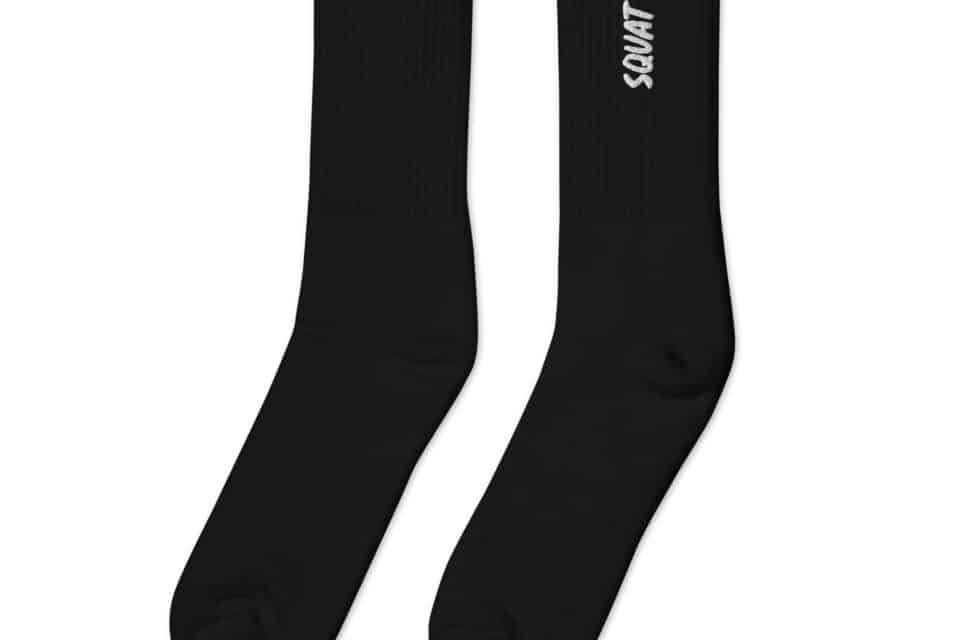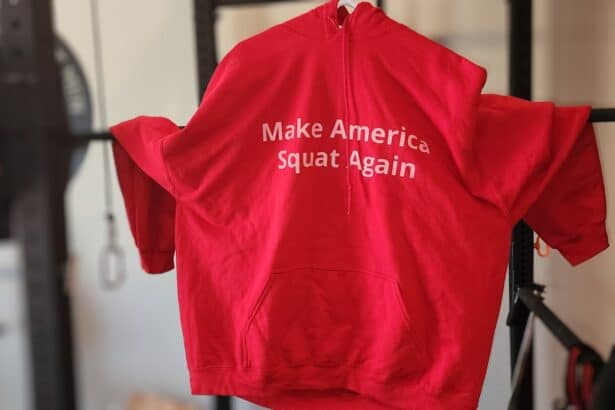Should you squat in socks?

Should you squat in Socks? Squatting is an essential exercise in any strength training program. It is an excellent compound movement that engages a wide range of muscles, including the quadriceps, hamstrings, glutes, and lower back. Squatting requires stability and balance, and your footwear can play a crucial role in helping you achieve these goals.
Traditionally, weightlifting shoes with a raised heel have been the go-to footwear for squats. These shoes provide a stable base for the foot, improve ankle mobility, and help you maintain an upright posture throughout the movement. However, in recent years, many lifters have turned to squatting in socks as an alternative. So, should you squat in socks? Let’s explore the pros and cons.
Benefits of Squatting in Socks
- Better proprioception
Proprioception is your body’s ability to sense its position, movement, and force of its parts. Squatting in socks improves proprioception, as you have direct contact with the ground. When you lift in shoes, the sole compresses, creating a less stable surface. With socks, your feet can grip the floor, giving you a better feel for your balance and weight distribution.
- Improved ankle mobility
The raised heel on weightlifting shoes can help lifters with poor ankle mobility. However, for those with good ankle flexibility, the raised heel can limit ankle mobility, leading to a more forward lean and decreased depth in the squat. Squatting in socks can help improve ankle mobility, allowing for a more natural range of motion in the ankle joint.
- Cost-effective
Weightlifting shoes can be expensive, ranging from $100 to $300. Squatting in socks is a cost-effective alternative that requires no extra equipment.
- Reduced risk of injury
Squatting in socks can reduce the risk of injury. Shoes with a heel lift can create an unstable base, increasing the risk of ankle, knee, and hip injuries. Lifting in socks allows for a more natural foot position, reducing the risk of joint injuries.
Drawbacks of Squatting in Socks
- Limited support
Socks offer no support or structure to the foot. Without the support of a shoe, lifters with flat feet or other foot conditions may experience discomfort or pain while squatting. Additionally, socks do not provide any lateral support, which can lead to the foot slipping or rolling during the lift.
- Hygiene concerns
Lifting in socks means your bare feet come into direct contact with the gym floor. Gyms can harbor a variety of bacteria and fungi, and lifting in socks can increase your risk of picking up an infection.
- Lack of heel lift
The raised heel on weightlifting shoes is beneficial for many lifters. The heel lift can help improve ankle mobility, reduce the load on the knee joint, and allow for a more upright torso position. Lifting in socks means you lose this benefit.
- Restricted use
Squatting in socks may not be practical for all types of lifts. For example, deadlifting in socks can increase the risk of skin tears or calluses on the foot. Additionally, some gyms may not allow lifting in socks due to hygiene concerns.
Should You Squat in Socks?
The answer to this question depends on your personal preference, lifting experience, and foot anatomy. Squatting in socks offers several benefits, including better proprioception, improved ankle mobility, and cost-effectiveness. However, lifting in socks may not be suitable for those with flat feet or other foot conditions, and there may be hygiene concerns associated with bare feet. Some embrace squatting in socks while others see it as bro-science.
If you choose to squat in socks, consider investing in a pair of high-quality grip socks that provide better support and grip on the gym floor.
We sell squat socks that aren’t too thick that may be an option for you, but as always you should consult a physician before lifting and learn your own personal technique. Squatting in socks may not be for you, but that’s a personal question we hope you explore. Check out Wethrift for our latest coupons so you can get the best deals on squat socks.

